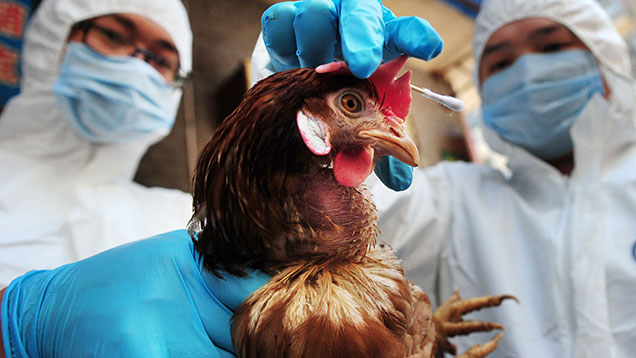Defra raises UK bird flu risk level
 © Rex Features
© Rex Features The incidence of high-pathogenic avian influenza is on the increase globally, making it more likely the UK will be subject to further outbreaks in the near future.
According to the latest outbreak assessment from Defra’s veterinary policy advice team, “there has been a considerable increase globally in the frequency of avian influenza outbreaks and reports of infected wild birds”.
This year alone in Europe there have been three further outbreaks of H5N8 in Germany (the same strain as affected the Yorkshire duck farm last November), and a case of H5N1 in a wild bird in Bulgaria – the first case of this strain since 2010.
See also: Bird flu hits Hampshire broiler breeding farm
Further afield, Israel and Palestine have seen H5N1 in four commercial units, while the USA continues to report H5N8, H5N2 and H5N1 in a variety of commercial and non-commercial situations.
These outbreaks are said to be of most concern to the UK, though the Defra team also points to increasing outbreaks in Asia, including 12 cases of H5N8 in Japan and 420 cases of various high-pathogenic strains in Taiwan.
“On another note, the human cases of avian influenza H7N9 in China have started to increase again, for the third year in a row,” said the report, which also points to the first human case in a Canadian who had recently returned home from China.
European situation
While the cases of H5N8 reported in four EU member states (UK, Germany, Netherlands and Italy) in 2014 have now been resolved, poultry producers should still be prepared for further outbreaks, especially since transmission by wild birds remains the most likely cause.
“The continued reports from Germany mean we cannot be complacent and we consider that at the present time the risk level has increased from low to low/medium of another introduction occurring in the UK,” said the report.
“The impact that incursion will have will depend on the biosecurity of poultry farms.
“The case in Bulgaria reminds us that H5N1 is still circulating and will cause significant problems for poultry with potential for human infection in rare circumstances.”
The report also included a map of known global flyways for waterfowl and shorebirds – with two going straight through the middle of Europe.
This provides a real opportunity for different strains of avian influenza to mix, which scientists say will likely result in further genetic diversity within this group of viruses “with unknown implications for maintenance and spread”.
The report, while just published, was written before the latest outbreak of low pathogenic H7 avian influenza on a broiler breeder farm in Hampshire.

